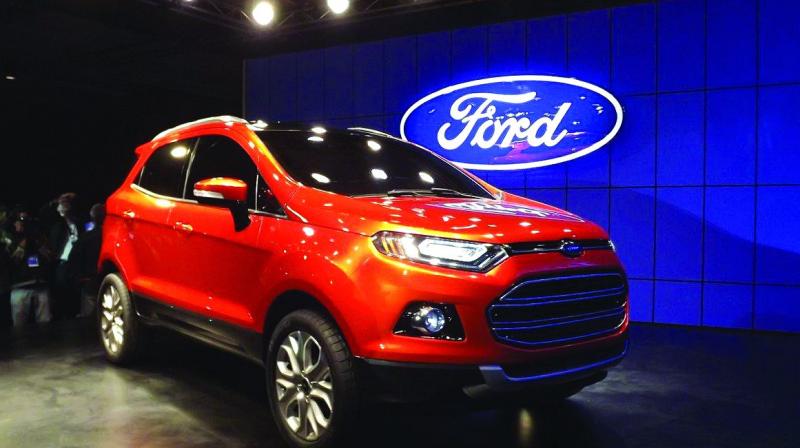Ford may merge India biz in new Mahindra JV
Firms in talks for 49:51 joint venture; Ford could move assets & staff to JV.

New Delhi: Ford Motor Co is nearing a deal with Mahindra & Mahindra to form a new joint venture in India, a move that will likely see the US automaker cease independent operations in the country, two sources with direct knowledge of the talks said.
The deal would make Ford the latest automaker to pare back its interests in India. At the end of 2017, General Motors Co downsized its Indian operations and stopped selling cars locally.
Over two decades, Dearborn, Michigan-based Ford invested more than $2 billion in India but has consistently struggled—it currently has a market share of just 3 per cent in India.
Under the terms of the deal being negotiated, Ford will form a new unit in India in which it will hold a 49 percent stake, while Mahindra will own 51 percent, the two sources said.
The US carmaker’s Indian unit will transfer most of its current automotive business to the new entity, including its assets and employees, according to one of the sources.
“It’s like a partial exit (for Ford from India),” the source said.
The deal is expected to close within 90 days, the sources said, adding the value of the transaction was not yet clear.
They spoke on condition of anonymity because of the sensitivity of the matter.
Ford said it does not comment on speculation, but added both companies continue to work together “to develop avenues of strategic cooperation that help us achieve commercial, manufacturing and business efficiencies”.
Mahindra too said it does not comment on speculation. It said in a statement it was “working together in identified areas” with Ford after a 2017 partnership arrangement, and “will announce further definitive agreements as we progress on some of the other areas.”
Currently, Ford manufactures and sells its cars in India through its wholly owned subsidiary. In 2017, it formed a strategic alliance with Mahindra under which, among other things, they will build new cars together, including sport-utility vehicles and electric variants.
—Reuters

